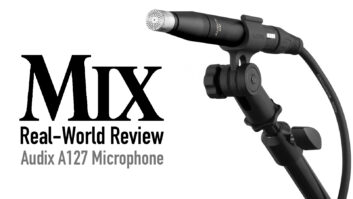According to a recent study, CD sales are down 11% over this same period a year ago. Finding the reason is simple enough: A little finger-pointing to any convenient villain and the record industry’s off the hook.
Twenty years ago, the ogre du jour was cassette tapes. Too much of that home-taping stuff going on for record labels to make any money. Does anybody remember the battle royale of the RIAA vs. the Home Taping Coalition? The WWF had nothing on them; somebody could have made a fortune selling tickets to that triple tag-team match.
Fifteen years ago, the first DAT decks arrived, followed by a flurry of failed CD copy-protection schemes. Eventually, DAT proved to be a consumer failure, but the stench of its SCMS copy protection lingers, making it difficult for bands working on home digital equipment to create backup copies of their own works.
Over the years, the industry found other excuses for low record sales. One of my favorites was that teens spent too much leisure money on video games, leaving nothing for music purchases. Meanwhile, record companies had lots of money coming in, especially with warehouses of older, highly profitable (and no-risk) catalog material to release to baby boomers.
When the Internet became a household appliance, file-sharing sites became the new scapegoat. Yet, once sites such as Napster were dismantled, others cropped up. And these days, nearly every home PC has a CD-R drive. So why didn’t record labels use this new distribution model to their advantage, putting up their own sites to download 99-cent singles?
Maybe we should look to the film industry for answers. With the dawn of DVD, movie studios banded together, adopted a (copy-protected!) standard and dove into the most successful new format launch since the Berliner disk in 1887. The key here is “a standard” — not seven, not five, not three — but a single medium. Meanwhile, while millions of DVD players were being sold worldwide, the audio industry whined, complained and argued over which high-performance standard was the best. No one bothered to notice that 99% of consumers didn’t care about ultrafidelity; they were buying and enjoying DVD releases that sounded great (for a few examples, check out Saving Private Ryan, The Eagles’ Hell Freezes Over, The Matrix or James Taylor Live at the Beacon Theater), looked great, had tons of cool bonus material (sometimes with a second disc to hold it all) and were priced just a few bucks more than a CD.
Record labels need to abandon the blame game and put the “repertoire” back in A&R. There are still too many rushed-to-market, “one great tune/11 songs of filler” releases. And, where’s the bonus material? Adding a second CD to that $16.98 package with artist interviews, rough demos, CD-ROM clips/images, etc., could add extra appeal. These days, when movie tickets and paperback novels hover around the $10 mark, the $16.98 list on a CD may not seem so bad — especially compared to 25 years ago, when you could buy a really nice house for $50 grand, and the list on vinyl records was $7.98. Music could still be “your best entertainment value,” but only if the industry stops looking for villains and starts looking for solutions.






